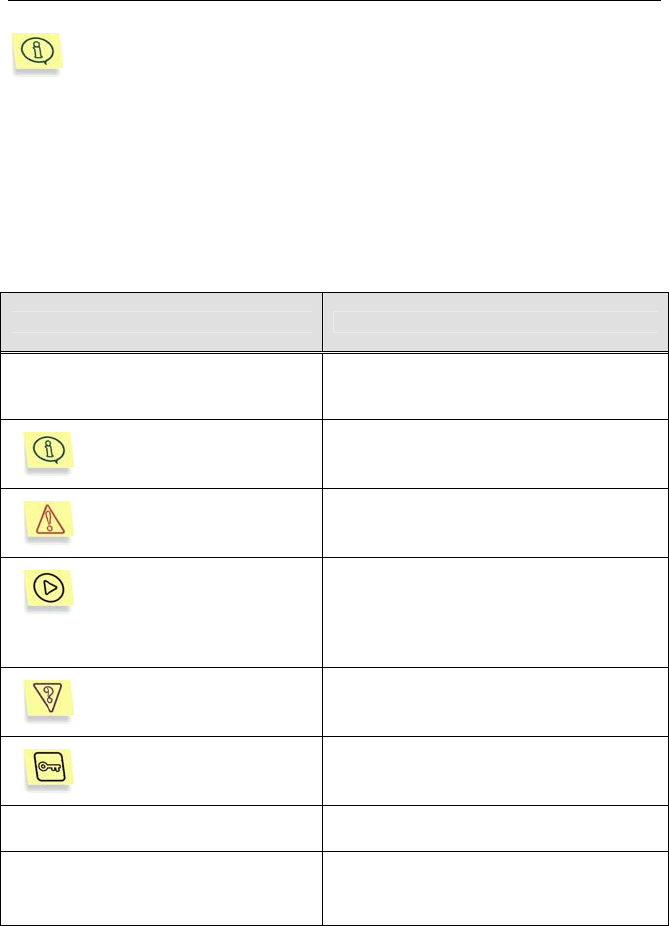User Guide
Table Of Contents
- KASPERSKY ANTI-VIRUS FOR PROXY SERVER
- OPERATION ALGORITHM AND TYPICAL DEPLOYMENT SCENARIOS
- INSTALLING THE APPLICATION
- USING KASPERSKY ANTI-VIRUS
- ADDITIONAL SETTINGS OF KASPERSKY ANTI-VIRUS
- Creating groups
- Anti-virus scan settings
- The choice of actions over scanned objects
- Administrator notifications
- Operation modes
- Modes of interaction with proxy via ICAP
- Application statistics logging
- Application reporting parameters
- Memory dump creation for detection of errors
- Work with Internet broadcasting stations
- UNINSTALLING THE APPLICATION
- APPLICATION REFERENCE
- KASPERSKY LAB
- LICENSE AGREEMENT

Kaspersky Anti-Virus for Proxy Server 9
Kaspersky Lab does not give advice on the performance and use of
your operating system or other technologies.
1.5. Conventions
Various formatting conventions are used throughout the text of this document
depending on the purpose of a particular element. Table 1 below lists the
formatting conventions used.
Table 1. Conventions
Style Meaning
Bold type
Menu titles, menu items, window titles,
parts of dialog boxes, etc.
Note.
Additional information, notes.
Attention!
Information requiring special attention.
In order to perform the
action,
1. Step 1.
2. …
Procedure description for user's steps
and possible actions.
Task, example
Statement of a problem, example for
using the software features.
Solution
Solution to a defined problem.
[key] – key purpose.
Command line keys.
Text of information
messages and the command
line
Text of configuration files, information
messages and the command line.










